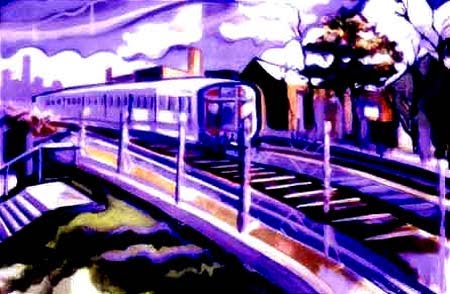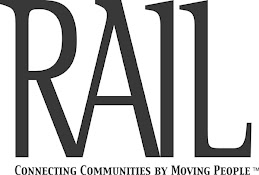Providers: Washington Area Metropolitan Transportation Authority (WMATA); Maryland Transit Administration (MTA); Virginia Railway Express (VRE); Amtrak
Modes: heavy rail metro; light rail; commuter rail; high-speed rail; intercity rail
Unique routes: 23, 2 pending (10 Amtrak high-speed and intercity; 6 WMATA Metro Rail; 3 MTA MARC; 2 VRE; 1 MTA Metro; 1 MTA Light Rail; 1 District of Columbia Streetcar pending, 1 MTA Light Rail pending)
Distinctive stations: Baltimore Penn Station, Baltimore Camden Station, Baltimore Mount Royal Station, Washington Union Station, Alexandria Union (King Street) Station
Equipment: WMATA heavy rail vehicles; MTA Metro vehicles; MTA Light Rail trainsets; MTA MARC trainsets; VRE trainsets; Amtrak Acela Express trainsets; Amtrak Amfleet trainsets; Amtrak Superliner trainsets
I nearly pushed my current home region from the Top 10 because of its familiarity to me. And, to a certain extent, there's high levels of uniformity among the WMATA Metro Rail and Amtrak routes. But when taking a step back, there is an abundance of passenger rail options in the so-called DMV (District of Columbia-Maryland-Virginia) region. Two MARC commuter rail routes connect the cities and its intercity and commuter lines are among the oldest in the nation. It's the southern terminus of the electrified Northeast Corridor and end of the only operating route in the Western Hemisphere that comes anywhere close to high-speed rail: the Acela Express. Nowhere in this half of the world do intercity passenger trains operate as often, frequently and reliably. Additionally, it's the only place where Amtrak's Acela Express and Superliner equipment serve the same station (Washington's 1918 Union Station hosts the long-distance Capitol Limted) .
Speaking of which, it's easily among the very finest in-service passenger rail facilities on the continent. Only New York's Grand Central Terminal and L.A.'s Union Passenger Terminal could even make a case. But, unlike those grand edifices, Union Station is a run-through facility, boosting its usability. In Baltimore, there's a trio of stately stations: the Pennsylvania Railroad's Northeast Corridor Penn Station (home to Amtrak, MARC's Penn Line and a branch of the MTA's Light Rail) and the Baltimore & Ohio's Camden and Mount Royal stations. The former hosts the MARC line of the same name along with the MTA's Light Rail main line, and while the latter no longer functions for railroad purposes, CSX's freight line emerges from the Howard Street Tunnel behind the old station, who's trainshed is still preserved. Howard Street is interesting for rail observers, as the MTA's Light Rail operates at street level while CSX trains creep underneath through the 1895 tunnel.
Continuing with Baltimore, it's operationally distinct heavy rail Metro and Light Rail systems are both interesting from a rail fan's perspective and confounding from a policy stance. Their infrastructure, vehicles, fare systems and other elements are entirely different from each other. And connections between the two requires a walk down Lexington Street and separate fares unless a day pass is purchased. The Metro is shorter and speedier, soaring above the Western Maryland Railway right-of-way through the city's northwest suburbs then ducking into tunnels through the heart of the city. Meanwhile, the Light Rail meanders along a mix of newly-created and reclaimed rail corridors north and south of town and crawls even slower on Howard Street downtown. For rail observers, the Light Rail is the more interesting of the two. But the recent cancellation of the planned Red Line light-rail project by Maryland Governor Larry Hogan dampened momentum for improvement of the city's rail transit network, which also was expected to include upgrades to all three MARC commuter rail routes. The status of those projects are uncertain.
Although Hogan cancelled the Red Line project, he approved continuation of the Purple Line light-rail line in Maryland's suburbs around Washington, utilizing the right-of-way of the former Baltimore & Ohio Georgetown Branch. The 16-mile line – if constructed as expected – would connect four WMATA Metro Rail lines and all three MARC lines with frequent light-rail service and potentially be the first quadrant of a full circumferential route connecting the entire WMATA Metro Rail network, which would be the first such circle line in the Americas. The project is expected to begin construction in the spring of 2016 and would be the first light-rail operation in the Washington vicinity. Likewise anticipated is the delayed opening of the D.C. Streetcar, which will return streetcars to the nation's capital for the first time in more than a half-century. Although the project has been severely delayed by poor project management by previous D.C. mayoral administrations, small fixes are currently being made, with a debut possible before the end of the year.
As a daily Metro Rail commuter, the nuances of the nation's second-busiest rail transit network (after the N.Y. City Subway) can blend together. Although there's subtle differences among stations (Greater Greater Washington has a fantastic guide to that) and the new 7000 Series trains are state-of-the-art, what's exceptional about the Washington Metro Rail network is its scope and impact on development and land use patterns over the past three decades. While the newest addition to the system, the Silver Line, is currently struggling to meet initial ridership projections, it has the potential to reshape Virginia's largest commercial and business district – Tysons Corner – in a similar fashion over the coming decades as well.
Elsewhere on the Virginia side, Alexandria's 1905 Union Station (usually referred to King Street station by locals) is in keeping with the historic sensibilities of Old Town Alexandria hosts frequent Amtrak and VRE service during rush hours. VRE – northern Virginia's commuter rail network – has experienced booming ridership in recent years and has upgraded its equipment to all bi-level, Gallery Car trainsets to match demand. The Fredericksburg Line has greater usage but is limited to peak direction service only by CSX freight traffic, while there seems to be greater capacity on Norfolk Southern's Manassas Line, which offers a couple reverse commute and mid-day trains. Neither route provides weekend service. The same is true with MARC's Brunswick and Camden lines, although the Penn Line now includes limited weekend trains. A new station will open this fall on the VRE's Fredericksburg Line in Spotsylvania, and an extension of the Manassas Line to Gainesville and Haymarket is under consideration, along with a replacement of the aging Long Bridge over the Potomac River into Washington that would include four tracks, boosting capacity for both passenger and freight traffic.
Throughout the region, true high-speed rail service remains elusive. Both Amtrak and a coalition of southeastern states have bold plans for high-speed routes for the Northeast Corridor and southward beyond Richmond, respectively, built to international standards but funding sources are far from certain. Additionally, the lack of a connection to Annapolis – the capital of Maryland, the only such state capital east of the Mississippi without any rail access – remains a frustrating considering the remnants of interurban routes to both Baltimore and Washington.
The Most Interesting North American Rail Networks Series






No comments:
Post a Comment